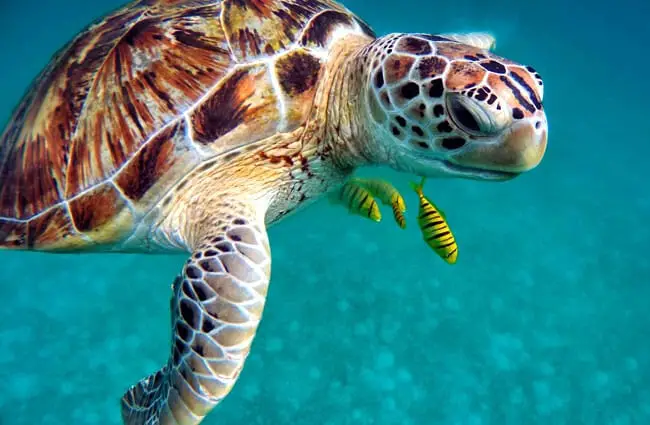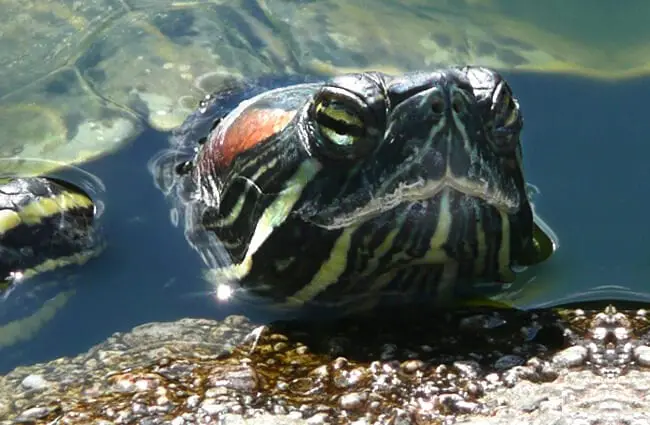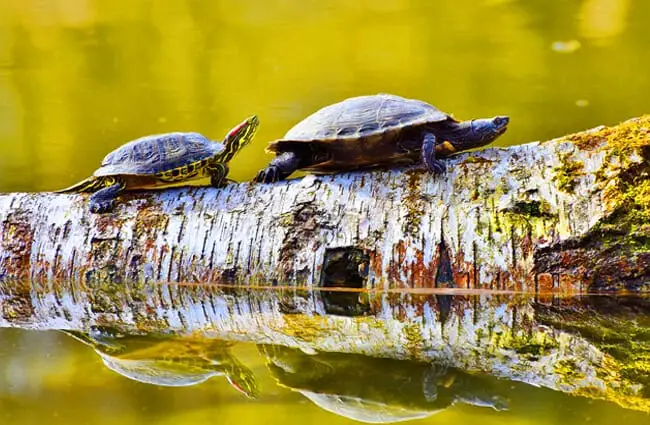The Ancient Mariners and Terrestrial Wanderers: Unpacking the World of Turtles
From the sun-drenched deserts to the deepest oceans, a lineage of reptiles has roamed our planet for over 200 million years, bearing a unique and unmistakable shield: the turtle. These remarkable creatures, encompassing tortoises, terrapins, and sea turtles, represent an extraordinary triumph of evolution, adapting to an astonishing array of environments. Their iconic shell, a fusion of ribs and vertebrae, is not merely a home but an integral part of their skeleton, offering unparalleled protection against predators and the elements. Exploring the world of turtles reveals a tapestry of ancient history, ecological ingenuity, and profound cultural significance.

A Glimpse into Turtle Diversity and Habitats
The term “turtle” broadly describes an order of reptiles known as Testudines, which are characterized by their bony or cartilaginous shell. This diverse group is typically categorized by their preferred habitat:
- Sea Turtles: These majestic creatures are entirely aquatic, inhabiting tropical and subtropical oceans worldwide. Species like the Green Sea Turtle, Loggerhead, and Leatherback are powerful swimmers, rarely venturing onto land except for females to nest. Their streamlined shells and paddle-like flippers are perfectly adapted for marine life.
- Freshwater Turtles (Terrapins): Found in rivers, lakes, ponds, and marshes across continents, freshwater turtles are semi-aquatic. They spend significant time both in water and basking on logs or rocks. Examples include the Red-eared Slider, Snapping Turtle, and Painted Turtle. Their webbed feet aid in swimming, while their relatively flat shells allow for agile movement in water.
- Tortoises: Strictly terrestrial, tortoises are found in a variety of land habitats, from arid deserts to lush forests. Unlike their aquatic relatives, tortoises possess dome-shaped shells and sturdy, elephantine legs adapted for walking on land. The Giant Tortoises of the Galápagos and Aldabra Atolls are prime examples of their impressive size and longevity.
For the animal lover hoping to find a turtle in the wild, understanding their habitat is key. Freshwater turtles are often seen basking on sunny days near water bodies, while tortoises might be spotted slowly grazing in grasslands or forests. Sea turtles are a rarer sight, typically observed by divers or, with great care and respect, during nesting seasons on remote beaches.

An Evolutionary Masterpiece: The Turtle’s Enduring Legacy
The evolutionary journey of turtles is nothing short of extraordinary. Their lineage stretches back to the Triassic period, over 200 million years ago, making them older than many dinosaurs. The defining feature, their shell, is a testament to millions of years of natural selection. Early turtle ancestors, like Odontochelys semitestacea, possessed a partial shell, primarily a plastron (the bottom part), suggesting the shell evolved from the belly up. Over time, the carapace (top part) developed, fusing with the ribs and vertebrae to create the impenetrable fortress we recognize today.
This unique skeletal adaptation has allowed turtles to survive numerous mass extinctions, adapting to changing climates and environments. Their slow metabolism and protective shell have contributed to their incredible longevity, with some species living for over a century. Studying turtle evolution provides invaluable insights into vertebrate development and the remarkable resilience of life on Earth.

What’s on the Menu? The Diverse Diets of Turtles
Turtle diets are as varied as their habitats, reflecting their diverse ecological roles. They can be herbivores, carnivores, or omnivores, with dietary preferences often shifting with age and species:
- Herbivores: Many tortoises, such as the Sulcata Tortoise, are primarily herbivorous, grazing on grasses, leaves, flowers, and fruits. Green Sea Turtles are also largely herbivorous, feeding on seagrasses and algae.
- Carnivores: Snapping Turtles are formidable carnivores, preying on fish, frogs, snakes, small mammals, and waterfowl. Loggerhead Sea Turtles have powerful jaws adapted for crushing the shells of crabs, conchs, and other mollusks. Hatchlings of many species are often more carnivorous than adults, requiring protein for rapid growth.
- Omnivores: Many freshwater turtles, like the Red-eared Slider, exhibit an omnivorous diet, consuming a mix of aquatic plants, insects, worms, small fish, and carrion. Their diet often changes from more carnivorous in youth to more herbivorous as they mature.
For zookeepers caring for captive turtles, understanding these specific dietary needs is paramount. A balanced diet, appropriate for the species and age, is crucial for health. This often includes a variety of fresh greens, vegetables, fruits, and appropriate protein sources, supplemented with calcium and vitamin D3 to prevent common nutritional deficiencies like metabolic bone disease.

The Circle of Life: Mating and Reproduction
The reproductive cycle of turtles is a fascinating display of instinct and endurance. Mating typically occurs in the water for aquatic species or on land for tortoises, often involving elaborate courtship rituals. Female turtles then embark on a critical journey to lay their eggs.
- Nesting: Female turtles, even sea turtles that spend their entire lives at sea, must return to land to nest. They often travel long distances to specific nesting sites, sometimes returning to the very beach where they hatched decades earlier. Using their hind flippers, they dig a flask-shaped nest chamber, depositing a clutch of soft-shelled eggs. The number of eggs varies greatly by species, from a few to over a hundred.
- Incubation: After laying, the female covers the nest and returns to her habitat, leaving the eggs to incubate naturally. A remarkable feature of many turtle species is temperature-dependent sex determination (TSD). The temperature of the nest during a critical period of incubation determines the sex of the hatchlings. Warmer temperatures often produce females, while cooler temperatures yield males. This makes them particularly vulnerable to climate change.
- Hatchlings: After several weeks or months, the tiny hatchlings emerge, often in unison, and dig their way to the surface. For sea turtles, this is a perilous dash to the ocean, fraught with predators. For terrestrial species, the journey to find food and shelter begins immediately. Few survive to adulthood, highlighting the importance of each successful nesting event.

Turtles in the Web of Life: Ecological Roles and Interactions
Ecosystem Engineers and Vital Links
Turtles are not just ancient survivors; they are crucial components of their ecosystems, playing diverse and often underappreciated roles:
- Seed Dispersal: Many herbivorous tortoises and freshwater turtles consume fruits and then disperse seeds through their waste, aiding in plant propagation and forest regeneration.
- Grazers and Scavengers: By consuming vegetation, turtles help maintain plant communities. As scavengers, particularly aquatic species, they help clean up decaying matter, contributing to nutrient cycling.
- Prey and Predator: While adults are well-protected, turtle eggs and hatchlings are a vital food source for a wide array of predators, including raccoons, foxes, birds, and crabs. Larger turtles, especially snapping turtles, are apex predators in their freshwater habitats.
- Habitat Creation: The burrows dug by gopher tortoises, for example, provide essential refuge for hundreds of other species, including snakes, insects, and small mammals, making them “ecosystem engineers.”
Turtles and Humanity: A Complex Relationship
The interaction between turtles and humans is a multifaceted narrative, spanning reverence, exploitation, and now, urgent conservation.
- Cultural Significance: Across many cultures, turtles symbolize longevity, wisdom, patience, and stability. In some creation myths, the world rests on the back of a giant turtle. Their enduring presence in folklore and art speaks to their deep connection with human civilization.
- Human Interactions:
- Threats: Unfortunately, human activities pose the greatest threat to turtle populations worldwide. This includes habitat loss and fragmentation due to development, pollution (especially plastic pollution in oceans), poaching for food and traditional medicine, and accidental bycatch in fishing nets. Road mortality is a significant issue for terrestrial and freshwater species.
- Conservation Efforts: Recognizing their plight, extensive conservation efforts are underway globally. These include protecting nesting beaches, reducing bycatch through modified fishing gear, combating illegal wildlife trade, and restoring critical habitats. Public awareness campaigns are vital to foster a sense of responsibility.
- Pet Trade: Turtles are popular pets, but irresponsible ownership can lead to significant problems. Many species require specialized care, and releasing non-native pet turtles into the wild can introduce diseases and disrupt local ecosystems.
Encountering Turtles in the Wild: A Guide for Respectful Observation
For hikers, nature enthusiasts, and anyone fortunate enough to encounter a turtle in its natural habitat, respectful observation is key to ensuring their well-being and your safety.
- Observe from a Distance: Turtles are wild animals. Maintain a respectful distance to avoid stressing them or disrupting their natural behavior. Never chase or attempt to capture a turtle.
- Do Not Touch or Feed: Handling turtles can transfer human oils and bacteria to their shells, potentially harming them. Feeding wild animals can alter their natural foraging behaviors and lead to dependence on humans.
- Road Safety: If you encounter a turtle attempting to cross a road, and it is safe for you to do so, you may assist it by moving it in the direction it was already headed. Never turn a turtle around, as it will simply try to cross again. Always move it off the road completely. Be cautious, as some species, like snapping turtles, can deliver a painful bite.
- Injured or Stranded Turtles: If you find an injured turtle or a sea turtle stranded on a beach, do not attempt to treat it yourself. Contact local wildlife rehabilitation centers, animal control, or a marine mammal stranding network immediately.
- Nesting Sites: If you are lucky enough to witness a nesting turtle, observe from a very far distance and avoid using flash photography, which can disorient the animal. Do not disturb the nest or eggs.
Caring for Captive Turtles: Insights for Zookeepers and Enthusiasts
Caring for turtles in captivity, whether in a zoo or as a pet, requires a deep understanding of their specific needs to ensure a long and healthy life. This guidance is particularly useful for zookeepers and dedicated enthusiasts.
- Habitat Requirements:
- Enclosure Size: Must be spacious enough to allow for movement, basking, and swimming (for aquatic species).
- Temperature Gradients: Provide a range of temperatures, including a basking spot with appropriate heat lamps, allowing the turtle to thermoregulate.
- UVB Lighting: Essential for vitamin D3 synthesis, which is crucial for calcium absorption and bone health. Replace UVB bulbs regularly as their output diminishes over time.
- Water Quality: For aquatic turtles, pristine water quality is non-negotiable. Robust filtration systems and regular water changes are necessary to prevent bacterial infections and shell rot.
- Substrate: Choose a substrate appropriate for the species. For tortoises, this might be a mix of soil and sand; for aquatic turtles, smooth river rocks or bare bottom tanks are often preferred.
- Enrichment: Provide environmental enrichment such as varied terrain, hiding spots, and opportunities to forage to stimulate natural behaviors.
- Dietary Management:
- Species-Specific Diets: Research the exact dietary needs of the species being kept. This varies significantly between herbivores, carnivores, and omnivores.
- Nutritional Supplements: Calcium powder with D3 should be dusted on food regularly. Multivitamin supplements can also be beneficial, but over-supplementation should be avoided.
- Avoidance of Inappropriate Foods: Certain foods are toxic or nutritionally poor for turtles. Avoid processed human foods, sugary fruits in excess, and foods high in oxalates for herbivores.
- Health Monitoring:
- Regular Health Checks: Observe the turtle daily for changes in appetite, activity level, shell condition, eye clarity, and respiration.
- Shell Health: Inspect the shell for any signs of softening, discoloration, or lesions, which could indicate shell rot or metabolic bone disease.
- Veterinary Care: Establish a relationship with a veterinarian experienced in reptile medicine for routine check-ups and immediate care if illness is suspected.
- Things to Avoid:
- Overcrowding: Can lead to stress, aggression, and increased disease transmission.
- Improper Temperatures: Both too hot and too cold can severely impact a turtle’s health and immune system.
- Unbalanced Diet: The leading cause of many health problems in captive turtles.
- Stressful Environments: Lack of hiding spots, constant handling, or noisy environments can cause chronic stress.
Fascinating Turtle Facts: A Compendium of Wonders
Beyond their basic biology, turtles hold a treasure trove of intriguing facts:
- Incredible Longevity: Many species are renowned for their long lifespans. Giant Tortoises can live for over 100 years, with some individuals exceeding 150 years.
- Shell Anatomy: The shell is composed of two main parts: the upper carapace and the lower plastron. These are covered by keratinous scutes (plates), which are shed individually in some species. The shell is innervated, meaning turtles can feel touch on their shells.
- Breathing Mechanisms: With their rigid shells, turtles cannot expand their chests like other reptiles. Instead, they use specialized muscles to pump air in and out of their lungs. Some aquatic turtles can even absorb oxygen through their skin or cloaca (a posterior opening) when submerged for extended periods.
- Sensory Abilities: Turtles have excellent eyesight, particularly in water, and a keen sense of smell, which they use to locate food and mates. While they lack external ears, they can detect vibrations and low-frequency sounds.
- Ancient Mariners: Leatherback Sea Turtles are the largest turtles and can dive to depths of over 1,200 meters (nearly 4,000 feet), holding their breath for over an hour. They can also regulate their body temperature, allowing them to venture into colder waters than other sea turtles.
- No Teeth: Turtles do not have teeth. Instead, they possess a sharp, horny beak that they use to cut and tear food.
The world of turtles is a testament to resilience, adaptation, and the sheer wonder of natural history. From their ancient origins to their vital roles in modern ecosystems, these shelled marvels continue to captivate and educate. Understanding and appreciating turtles is not just an academic exercise; it is a call to action to protect these extraordinary creatures and the diverse habitats they call home, ensuring their enduring legacy for generations to come.

![Red Angus Closeup of a beautiful Red Angus cowPhoto by: U.S. Department of Agriculture [pubic domain]https://creativecommons.org/licenses/by/2.0/](https://animals.net/wp-content/uploads/2020/03/Red-Angus-4-238x178.jpg)




![Red Angus Closeup of a beautiful Red Angus cowPhoto by: U.S. Department of Agriculture [pubic domain]https://creativecommons.org/licenses/by/2.0/](https://animals.net/wp-content/uploads/2020/03/Red-Angus-4-100x75.jpg)

